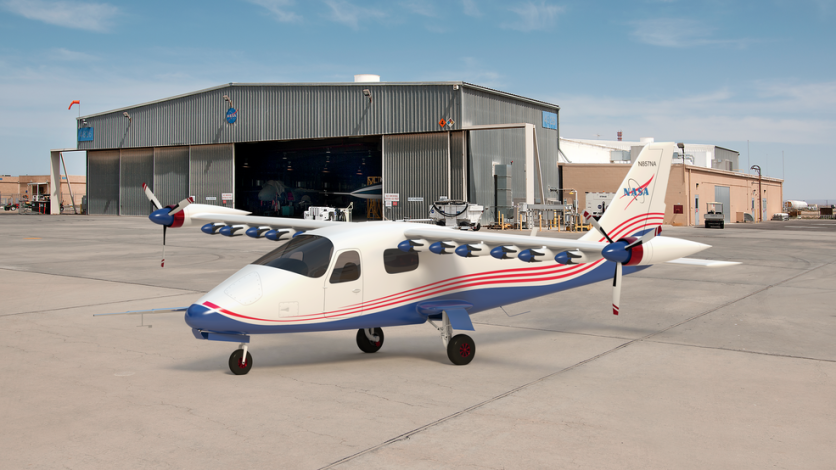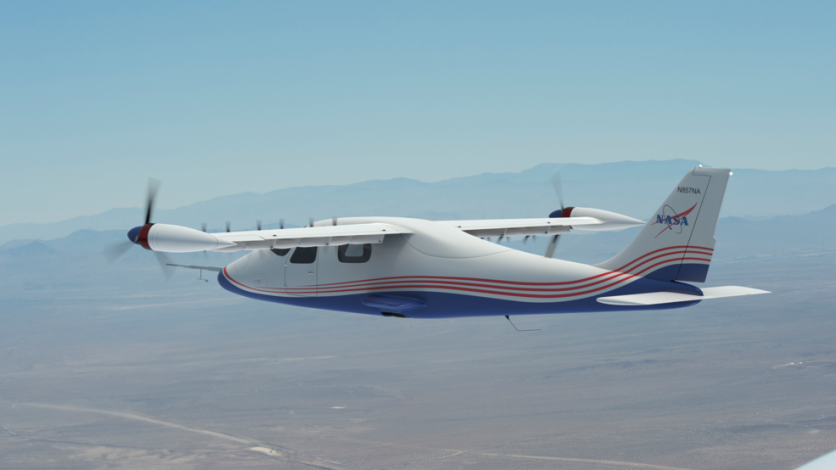
NASA has shared the first photos showing its new all-electric X-57 Maxwell plane that would be quieter and up to 500% more efficient than a traditional aircraft. It might be the first-ever manned X-aircraft produced by NASA in a long time and is designed to help develop standards for the future all-electric plane. The X-57 Maxwell originally started as a 4-seater Tecnam P2006T conventional light plane that had its piston engines replaced with 12 electric-powered cars.

Will this plane be more efficient?
NASA says it has bespoke skinny wings on the way to increase efficiency by using decreasing drag in flight and has rechargeable lithium-ion batteries to provide energy.
The artist concept photos show the planes in their very last of four configurations worked on through NASA since it was first conceived.

The aircraft has been advanced by a team of engineers, researchers, pilots, visual artists, and lots of other people at NASA.
It receives its takeoff and touchdown propulsion from 12 high-lift electric powered automobiles on the threshold of the wing earlier than wingtip propellers take over while in flight. These are only prototype artist impressions, as opposed to the finished plane.
NASA says the new X-57 can be 500% more efficient at cruising speeds than a conventional plane. This could be even as generating no in-flight emissions and much less noise.
The small, experimental plane has a high-aspect-ratio wing and 5 ft. diameter wingtip propellers. It is used to recover energy at the same time as in flight.
"The X-57 plane makes use of 12 small cars positioned across the wing to increase airflow so that the wing lifts even if the aircraft is flying slowly," according to DailyMail.
The craft will be used to set the standard for all future all-electric aircraft and provide regulations for the planes certified to operate.
NASA said electric power is green and reliable. The space agency explained electric motors could be placed anywhere on the plane to improve efficiency.'
The plane requires "no fuel, no combustion engine' and 'It's powered 100% by a modern dispensed electric powered propulsion system," said NASA.
Scottish-inspired plane
The X-57 gets its call from a Scottish physicist who pioneered electromagnetism.
'James Clerk Maxwell, a 19th-century Scottish physicist, pioneered the principle of electromagnetism,' NASA stated.
Adding: 'This paved the way for Einstein's theory of special relativity and Planck's components of quantum mechanics.'
The X-57 Maxwell has been depicted in several levels of operation at NASA's Armstrong Flight Research Center, positioned at Edwards Air Force Base in California.
For more than 70 years, the location has been home to many historical X-planes, or experimental aircraft, responsible for expanding the envelope and pushing the boundaries of aviation - a tradition that NASA is keeping alive by the Aeronautics Research Mission Directorate.
Electric plane presents a big selection of potential advantages to aviation, including increased efficiency, decreased or removed in-flight carbon emissions, and flight this is quieter for communities at the ground.
ⓒ 2025 TECHTIMES.com All rights reserved. Do not reproduce without permission.




